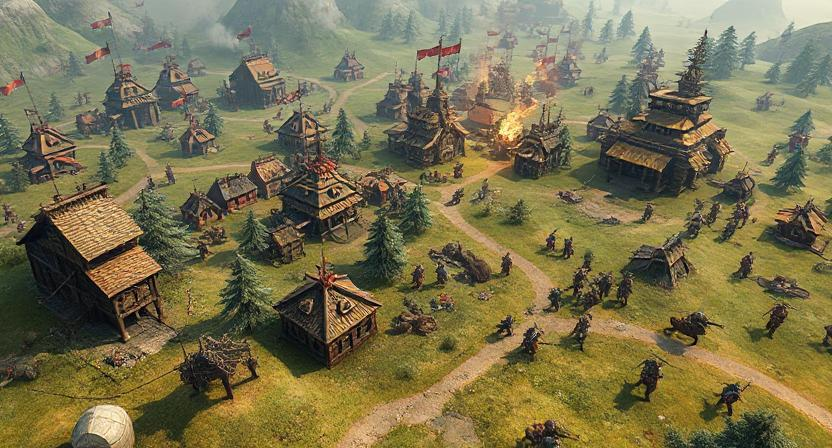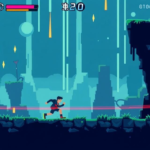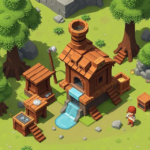The battle royale genre has taken the gaming world by storm in recent years, with titles like Fortnite, PUBG, and Apex Legends achieving massive success. But what makes these games so compelling? To truly understand the magic behind these titles, we need to break down the game design elements that make them so popular and addictive.
1. Map Design and Environmental Interactivity
One of the defining features of battle royale games is the open-world map design. These vast, expansive environments are filled with a variety of terrain types, from dense forests to urban cities to open fields. The beauty of these maps lies not just in their size but in their dynamic features.
- Dynamic Shrinking Zones: Battle royale games are built around a shrinking play zone that forces players to converge into a smaller area as the match progresses. This mechanic keeps the action intense, ensuring that players are never far from combat. Fortnite employs a constantly shrinking storm that pushes players towards each other, creating natural conflict.
- Environmental Hazards and Opportunities: Some battle royale games go beyond simple shrinking zones. For example, Apex Legends features environmental hazards like damaging gas zones or lava pits, while PUBG has weather conditions that can impact visibility and tactical decision-making. These environmental challenges force players to think on their feet and adapt quickly to changing situations.
2. Loot and Resource Management
Looting is central to the battle royale experience. Players start each match with nothing and must scavenge weapons, armor, and healing items in order to survive. The distribution of loot is critical to the pacing and excitement of the game.
- Loot Rarity: In Fortnite, loot is color-coded by rarity, with common items being easy to find and legendary items being harder to acquire but much more powerful. This system encourages players to take risks and explore high-risk areas to secure better gear. Apex Legends features similar mechanics, with players seeking out better weapons and armor while avoiding combat until they feel properly equipped.
- Strategic Looting: The key to successful looting lies in balancing speed and caution. Players need to quickly loot areas while also keeping an eye out for other players who might be doing the same thing. A well-timed and well-executed loot strategy can often mean the difference between life and death.
3. Combat Mechanics and Weapon Balance
The combat mechanics in battle royale games combine elements of traditional shooting mechanics, tactical positioning, and decision-making. The feel of combat varies from game to game, but the core remains the same: eliminate other players before they eliminate you.
- Weapon Variety: A good battle royale game features a wide range of weapons, from shotguns to sniper rifles to melee weapons, each with its own strengths and weaknesses. PUBG emphasizes realism, with different weapons having varying levels of recoil and handling, while Apex Legends incorporates futuristic energy weapons with unique mechanics.
- Engagement and Elimination: Combat encounters in battle royale games are usually quick and intense. Successful players often make use of cover, high ground, and quick reflexes. In Fortnite, building structures can also play a key role in combat, adding a layer of complexity to gunfights. Meanwhile, Apex Legends offers characters with unique abilities that add to the complexity of combat, such as healing, creating decoys, or repositioning quickly.
4. Teamwork and Coordination
While many battle royale games have solo modes, the squad-based playstyle is arguably the most interesting. In these modes, players must work together to ensure that they not only survive but also succeed. Communication and strategy are paramount in achieving victory.
- Synergizing Abilities: In Apex Legends, each character has unique abilities that can be used to gain an advantage over opponents. For instance, a character like Wraith can teleport to outmaneuver enemies, while Gibraltar can deploy a shield to protect teammates. These abilities create an added layer of strategy that goes beyond just shooting and looting.
- Tactical Decision Making: Team-based play also involves complex decision-making. Players must decide whether to fight or avoid combat, when to push an objective, or when to retreat and heal. This type of coordination elevates the gameplay from simple combat to a tactical, team-based experience. The best teams are those that can communicate efficiently, share loot and resources, and execute well-timed strategies.
5. Pacing and Endgame Dynamics
The pacing of a battle royale game is critical to its enjoyment. If the game feels too slow, it can become tedious; too fast, and it can feel chaotic and frustrating. The game must strike a balance between exploration, combat, and tension-building moments.
- Dynamic Endgame: As the match progresses and the safe zone shrinks, the pace naturally increases. Towards the end of the game, players are pushed closer together, leading to intense, last-minute fights. This is where the best players shine—using their gear, positioning, and strategy to come out on top in the final moments.
- Final Circle Strategy: Most battle royales culminate in a “final circle,” a shrinking area where the last few players or teams converge. These moments are often the most thrilling as players use all of their skills, knowledge, and gear to outlast their opponents. In games like Fortnite, the construction system becomes a key part of the final fights, while in PUBG, gunplay and positioning are more crucial.




Leave a Reply